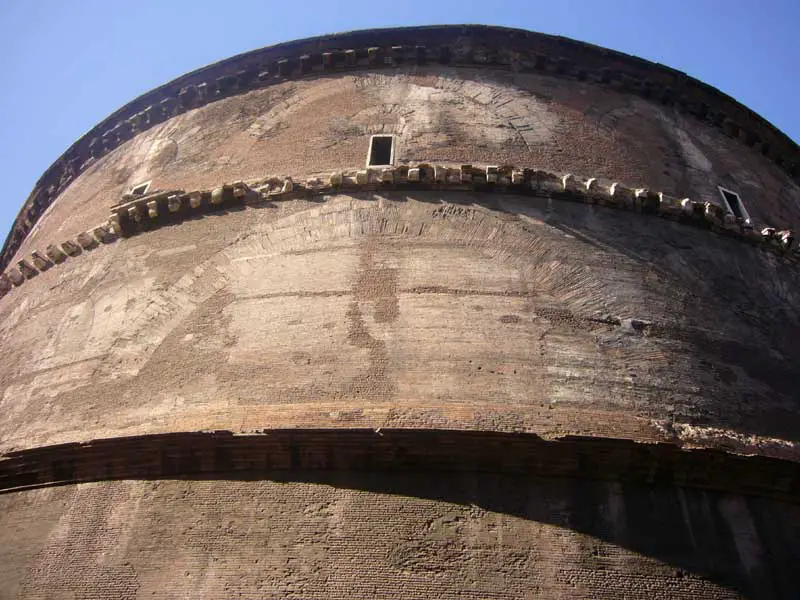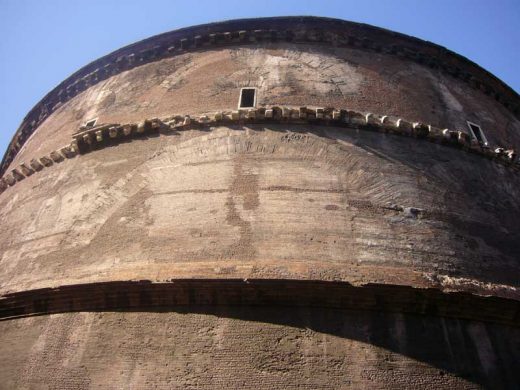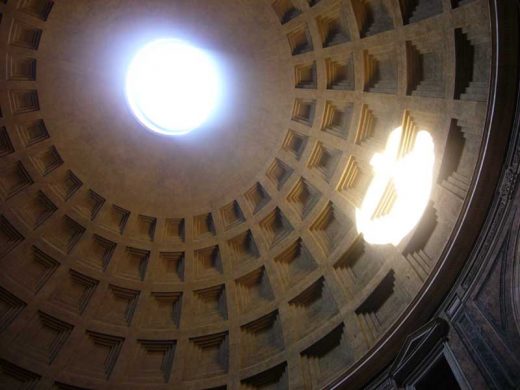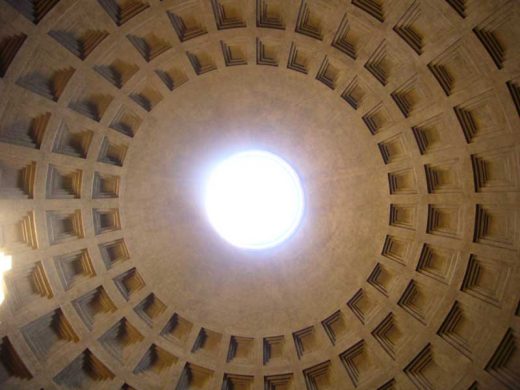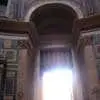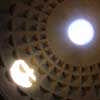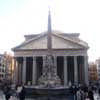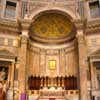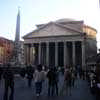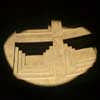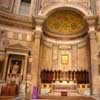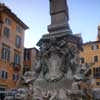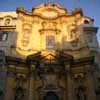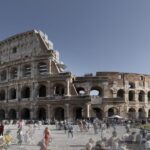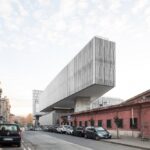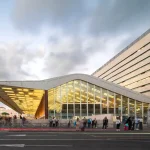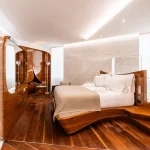The Pantheon Rome Photos, Historic Italian Building, Ancient Roman Architecture Design in Italy
Pantheon Rome Photos
Roman Building Photographs, temple in Italy built by Marcus Agrippa
post updated 16 Jan 2021
The Pantheon
Date built: 118-128AD
Pantheon Roma : Architettura Italia:
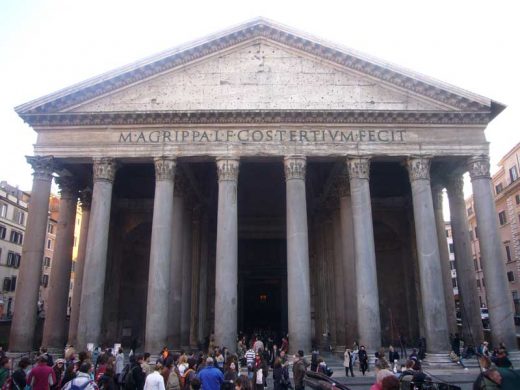
Roman temple built by Marcus Agrippa
Rebuilt by Emperor Hadrian around 126 AD
Circular building with Corinthian portico
Key feature: oculus – the circular hole in the middle of the coffered, concrete dome – that allows a mesmerising disk of light to rotate around the inner dome (when the sun shines of course)
Location: centre of the city, on west side of Via del Corso
The Pantheon dome is the world’s largest un-reinforced concrete dome
The building is cylindrical with a portico of large granite Corinthian columns (eight in the first rank and two groups of four behind) under a pediment. A rectangular vestibule links the porch to the rotunda, which is under a coffered concrete dome, with a central opening (oculus) to the sky.
Almost two thousand years after it was built, the Pantheon’s dome is still the world’s largest unreinforced concrete dome. The height to the oculus and the diameter of the interior circle are the same, 43 metres (142 ft).
The height from the floor to the oculus and the diameter of the circular interior are the same: 43.3 metres or 142 ft.
Roman Buildings : Traditional architecture
It is one of the best-preserved of all Ancient Roman buildings, in large part because it has been in continuous use throughout its history and, since the 7th century, the Pantheon has been in use as a church dedicated to “St. Mary and the Martyrs” (Latin: Sancta Maria ad Martyres) but informally known as “Santa Maria Rotonda”. The square in front of the Pantheon is called Piazza della Rotonda.
The Pantheon is a state property, managed by Italy’s Ministry of Cultural Heritage and Activities and Tourism through the Polo Museale del Lazio. In 2013, it was visited by over 6 million people.
In 1747, the broad frieze below the dome with its false windows was “restored,” but bore little resemblance to the original. In the early decades of the 20th century, a piece of the original, as could be reconstructed from Renaissance drawings and paintings, was recreated in one of the panels.
Two kings of Italy are buried in the Pantheon: Vittorio Emanuele II and Umberto I, as well as Umberto’s Queen, Margherita.
The building is in use as a Catholic church. Masses are celebrated on Sundays and holy days. Weddings are also held in this magnificent space occasionally.
Building Images © Adrian Welch : available upon request: photos 2816×2112 pixels
Church just north of Pantheon:
Santa Maria Maddalena – St Mary Magdalen, Piazza di Maddalena
Façade – 1735: Giuseppe Sardi
Location: Pantheon, Rome, Italy, southern Europe
Architecture in Rome
Rome Architecture Designs – chronological list
Rome Architecture Walking Tours by e-architect – city walks
Buildings close by The Pantheon:
Santa Maria Sopra Minerva – to the southeast
Santa Maria della Pace, northeast of Piazza Navona – to the west
Gesù – Gesu church, Corso Vittorio Emanuele II – to the south
Rome architecture : contemporary buildings
Contemporary Italian capital city buildings on e-architect – selection below:
Hawkers Rome Store, near Plaza de España
Architects: CuldeSac
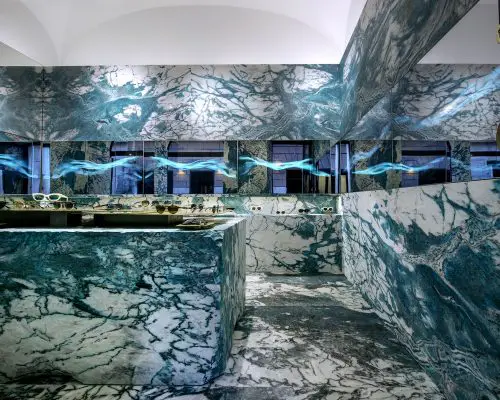
photograph : Luigi Filetici
Hawkers Rome Store
Architects: Labics
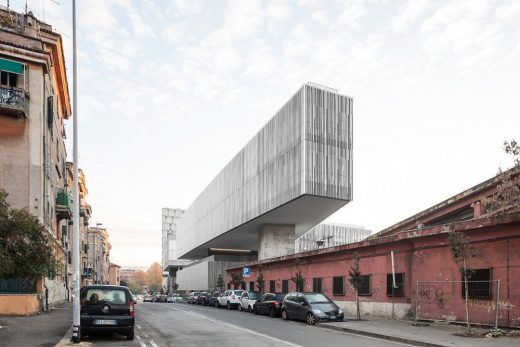
photograph : Marco Cappelletti
City of Sun in Rome
Comments / photos for the Pantheon Building Rome page welcome

